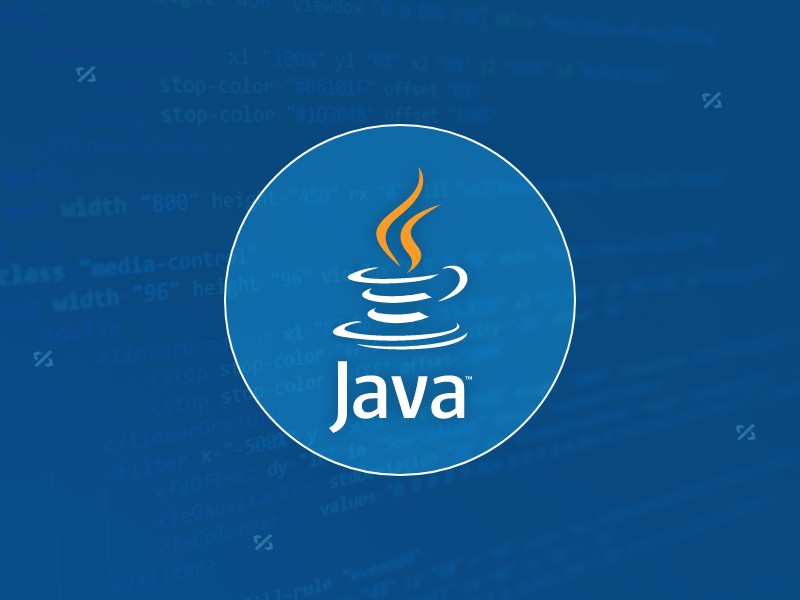The core new features of Java 8 include Lambda expressions, Stream APIs, and default methods. 1. Lambda expressions simplify the implementation of functional interfaces, making the code more concise, but it should be noted that it is only applicable to functional interfaces and should not be too complicated; 2. The Stream API provides declarative data processing methods to improve collection operation efficiency, but should avoid using them on small amounts of data and reduce side effects; 3. The default method allows interfaces to define method implementations to enhance backward compatibility, but cannot access class state and need to resolve method conflict problems. The rational use of these features can improve code quality and development efficiency.

Java 8 is a major version update in the development of Java, bringing many practical and far-reaching new features. These new features not only improve the simplicity and readability of the code, but also significantly enhance Java's capabilities in functional programming.

Lambda expression: make the code simpler
Lambda expressions are one of the most eye-catching features of Java 8. It allows you to represent an instance of an interface with only one abstract method (i.e., a functional interface) in a more concise way. This is especially useful when dealing with collection traversals.

For example, before Java 8, you might need to start a thread with an anonymous inner class:
new Thread(new Runnable() {
@Override
public void run() {
System.out.println("Old way");
}
});Now you can do it with a line of Lambda expressions:

new Thread(() -> System.out.println("New way")).start();The following points should be paid attention to when using Lambda:
- Make sure the target interface is a functional interface (the @FunctionalInterface annotation can help check this).
- Lambda expressions are suitable for simple logic, but it is recommended to use conventional methods for overly complex logic.
- Don't abuse Lambda, especially in the case of multiple statements, it's more important to keep the code readable.
Stream API: Operating collections are more efficient
The Stream API provides a declarative way to process data collections, especially when combined with Lambda expressions, the code logic is clearer.
You can use Stream to filter, map and collect data. For example, find all even numbers from a list of integers and print them out:
List<Integer> numbers = Arrays.asList(1, 2, 3, 4, 5, 6);
numbers.stream()
.filter(n -> n % 2 == 0)
.forEach(System.out::println);There are several common misunderstandings to note when using Stream:
- Don't overuse Stream on small collections, performance advantages are usually reflected in large amounts of data.
- Avoid side effects in Stream operations (such as modifying external variables), which can easily cause concurrent problems or difficult to debug errors.
- Learn more about the differences between intermediate operations (such as filter, map) and terminal operations (such as forEach, collect).
Default method: The interface can also be implemented
Java 8 allows the definition of default methods in an interface, which means you can add new methods to the interface without breaking existing implementations. This feature is mainly intended to support backward compatibility.
For example, you can define an interface with a default method like this:
public interface MyInterface {
default void doSomething() {
System.out.println("Doing something");
}
} Then any class that implements the interface will automatically have this method and no additional implementation is required.
Although this function is powerful, there are some things to note:
- The default method cannot access the state of the implementation class because it does not have this pointer to a concrete object.
- If the two interfaces have default methods with the same name, the implementation class must specify which one to use, otherwise the compilation will fail.
- Try to avoid using the default method heavily in the interface unless it is indeed for compatibility considerations.
Basically that's it. These new features of Java 8 have changed the way we write code, especially the combination of Lambda and Stream, making many of the originally verbose operations elegant and concise. However, they are not omnipotent, and only when used reasonably can they achieve their maximum value.
The above is the detailed content of Exploring New Features Introduced in Java 8. For more information, please follow other related articles on the PHP Chinese website!

Hot AI Tools

Undress AI Tool
Undress images for free

Undresser.AI Undress
AI-powered app for creating realistic nude photos

AI Clothes Remover
Online AI tool for removing clothes from photos.

Clothoff.io
AI clothes remover

Video Face Swap
Swap faces in any video effortlessly with our completely free AI face swap tool!

Hot Article

Hot Tools

Notepad++7.3.1
Easy-to-use and free code editor

SublimeText3 Chinese version
Chinese version, very easy to use

Zend Studio 13.0.1
Powerful PHP integrated development environment

Dreamweaver CS6
Visual web development tools

SublimeText3 Mac version
God-level code editing software (SublimeText3)

Hot Topics
 How to iterate over a Map in Java?
Jul 13, 2025 am 02:54 AM
How to iterate over a Map in Java?
Jul 13, 2025 am 02:54 AM
There are three common methods to traverse Map in Java: 1. Use entrySet to obtain keys and values at the same time, which is suitable for most scenarios; 2. Use keySet or values to traverse keys or values respectively; 3. Use Java8's forEach to simplify the code structure. entrySet returns a Set set containing all key-value pairs, and each loop gets the Map.Entry object, suitable for frequent access to keys and values; if only keys or values are required, you can call keySet() or values() respectively, or you can get the value through map.get(key) when traversing the keys; Java 8 can use forEach((key,value)->
 Java Optional example
Jul 12, 2025 am 02:55 AM
Java Optional example
Jul 12, 2025 am 02:55 AM
Optional can clearly express intentions and reduce code noise for null judgments. 1. Optional.ofNullable is a common way to deal with null objects. For example, when taking values ??from maps, orElse can be used to provide default values, so that the logic is clearer and concise; 2. Use chain calls maps to achieve nested values ??to safely avoid NPE, and automatically terminate if any link is null and return the default value; 3. Filter can be used for conditional filtering, and subsequent operations will continue to be performed only if the conditions are met, otherwise it will jump directly to orElse, which is suitable for lightweight business judgment; 4. It is not recommended to overuse Optional, such as basic types or simple logic, which will increase complexity, and some scenarios will directly return to nu.
 How to fix java.io.NotSerializableException?
Jul 12, 2025 am 03:07 AM
How to fix java.io.NotSerializableException?
Jul 12, 2025 am 03:07 AM
The core workaround for encountering java.io.NotSerializableException is to ensure that all classes that need to be serialized implement the Serializable interface and check the serialization support of nested objects. 1. Add implementsSerializable to the main class; 2. Ensure that the corresponding classes of custom fields in the class also implement Serializable; 3. Use transient to mark fields that do not need to be serialized; 4. Check the non-serialized types in collections or nested objects; 5. Check which class does not implement the interface; 6. Consider replacement design for classes that cannot be modified, such as saving key data or using serializable intermediate structures; 7. Consider modifying
 Comparable vs Comparator in Java
Jul 13, 2025 am 02:31 AM
Comparable vs Comparator in Java
Jul 13, 2025 am 02:31 AM
In Java, Comparable is used to define default sorting rules internally, and Comparator is used to define multiple sorting logic externally. 1.Comparable is an interface implemented by the class itself. It defines the natural order by rewriting the compareTo() method. It is suitable for classes with fixed and most commonly used sorting methods, such as String or Integer. 2. Comparator is an externally defined functional interface, implemented through the compare() method, suitable for situations where multiple sorting methods are required for the same class, the class source code cannot be modified, or the sorting logic is often changed. The difference between the two is that Comparable can only define a sorting logic and needs to modify the class itself, while Compar
 How to parse JSON in Java?
Jul 11, 2025 am 02:18 AM
How to parse JSON in Java?
Jul 11, 2025 am 02:18 AM
There are three common ways to parse JSON in Java: use Jackson, Gson, or org.json. 1. Jackson is suitable for most projects, with good performance and comprehensive functions, and supports conversion and annotation mapping between objects and JSON strings; 2. Gson is more suitable for Android projects or lightweight needs, and is simple to use but slightly inferior in handling complex structures and high-performance scenarios; 3.org.json is suitable for simple tasks or small scripts, and is not recommended for large projects because of its lack of flexibility and type safety. The choice should be decided based on actual needs.
 Java method references explained
Jul 12, 2025 am 02:59 AM
Java method references explained
Jul 12, 2025 am 02:59 AM
Method reference is a way to simplify the writing of Lambda expressions in Java, making the code more concise. It is not a new syntax, but a shortcut to Lambda expressions introduced by Java 8, suitable for the context of functional interfaces. The core is to use existing methods directly as implementations of functional interfaces. For example, System.out::println is equivalent to s->System.out.println(s). There are four main forms of method reference: 1. Static method reference (ClassName::staticMethodName); 2. Instance method reference (binding to a specific object, instance::methodName); 3.
 How to handle character encoding issues in Java?
Jul 13, 2025 am 02:46 AM
How to handle character encoding issues in Java?
Jul 13, 2025 am 02:46 AM
To deal with character encoding problems in Java, the key is to clearly specify the encoding used at each step. 1. Always specify encoding when reading and writing text, use InputStreamReader and OutputStreamWriter and pass in an explicit character set to avoid relying on system default encoding. 2. Make sure both ends are consistent when processing strings on the network boundary, set the correct Content-Type header and explicitly specify the encoding with the library. 3. Use String.getBytes() and newString(byte[]) with caution, and always manually specify StandardCharsets.UTF_8 to avoid data corruption caused by platform differences. In short, by
 Outlook shortcut for new email
Jul 11, 2025 am 03:25 AM
Outlook shortcut for new email
Jul 11, 2025 am 03:25 AM
How to quickly create new emails in Outlook is as follows: 1. The desktop version uses the shortcut key Ctrl Shift M to directly pop up a new email window; 2. The web version can create new emails in one-click by creating a bookmark containing JavaScript (such as javascript:document.querySelector("divrole='button'").click()); 3. Use browser plug-ins (such as Vimium, CrxMouseGestures) to trigger the "New Mail" button; 4. Windows users can also select "New Mail" by right-clicking the Outlook icon of the taskbar






